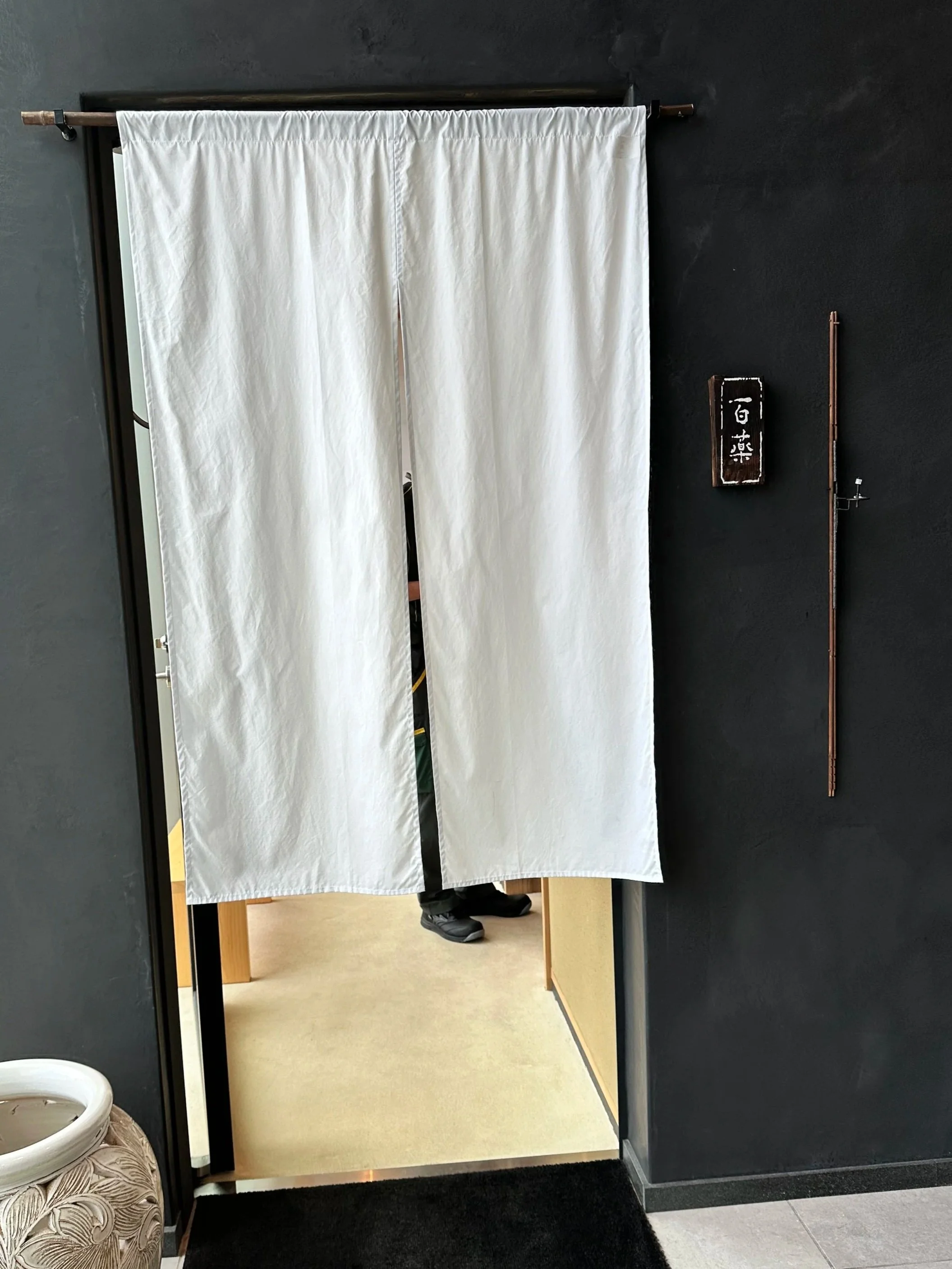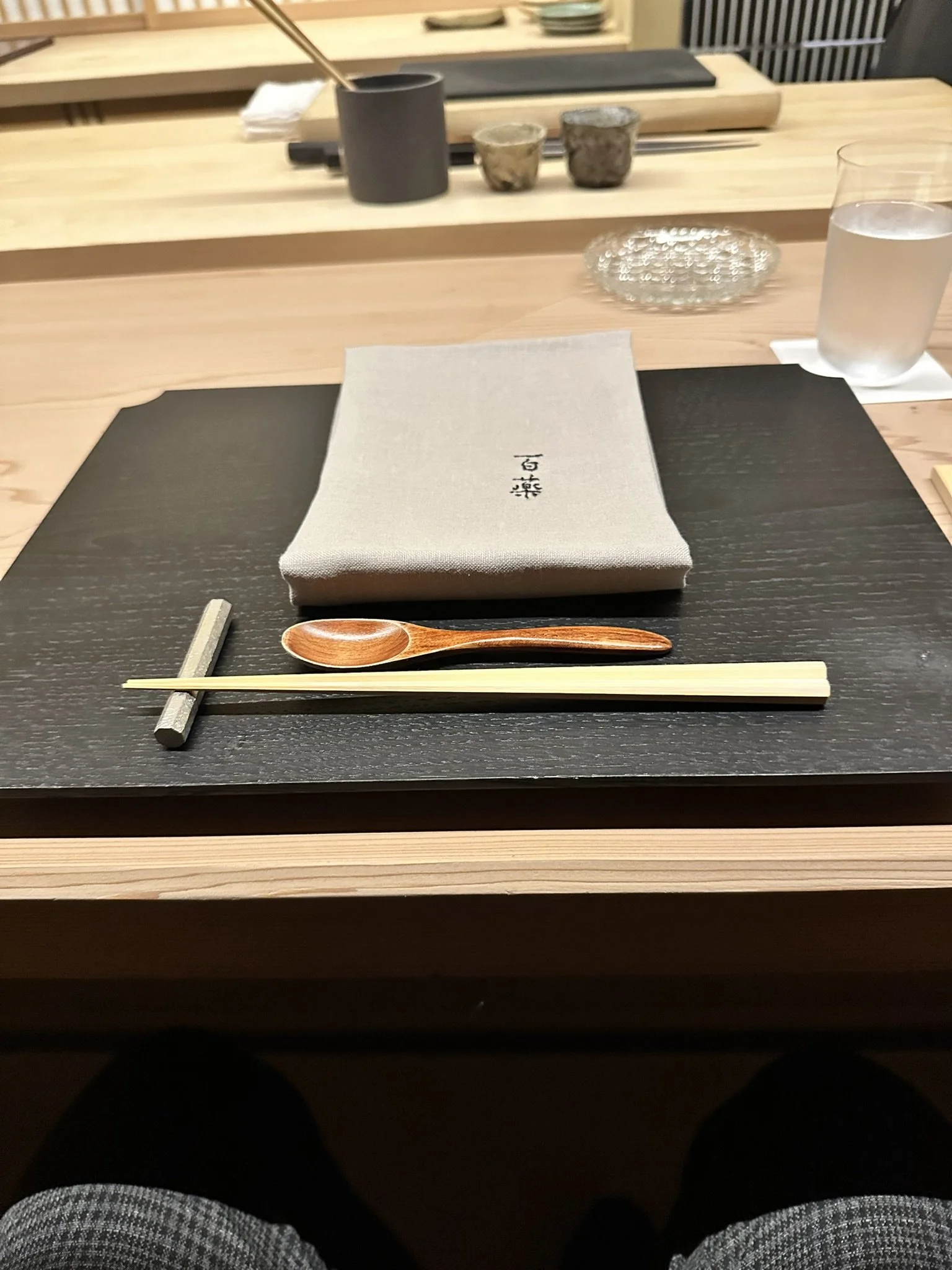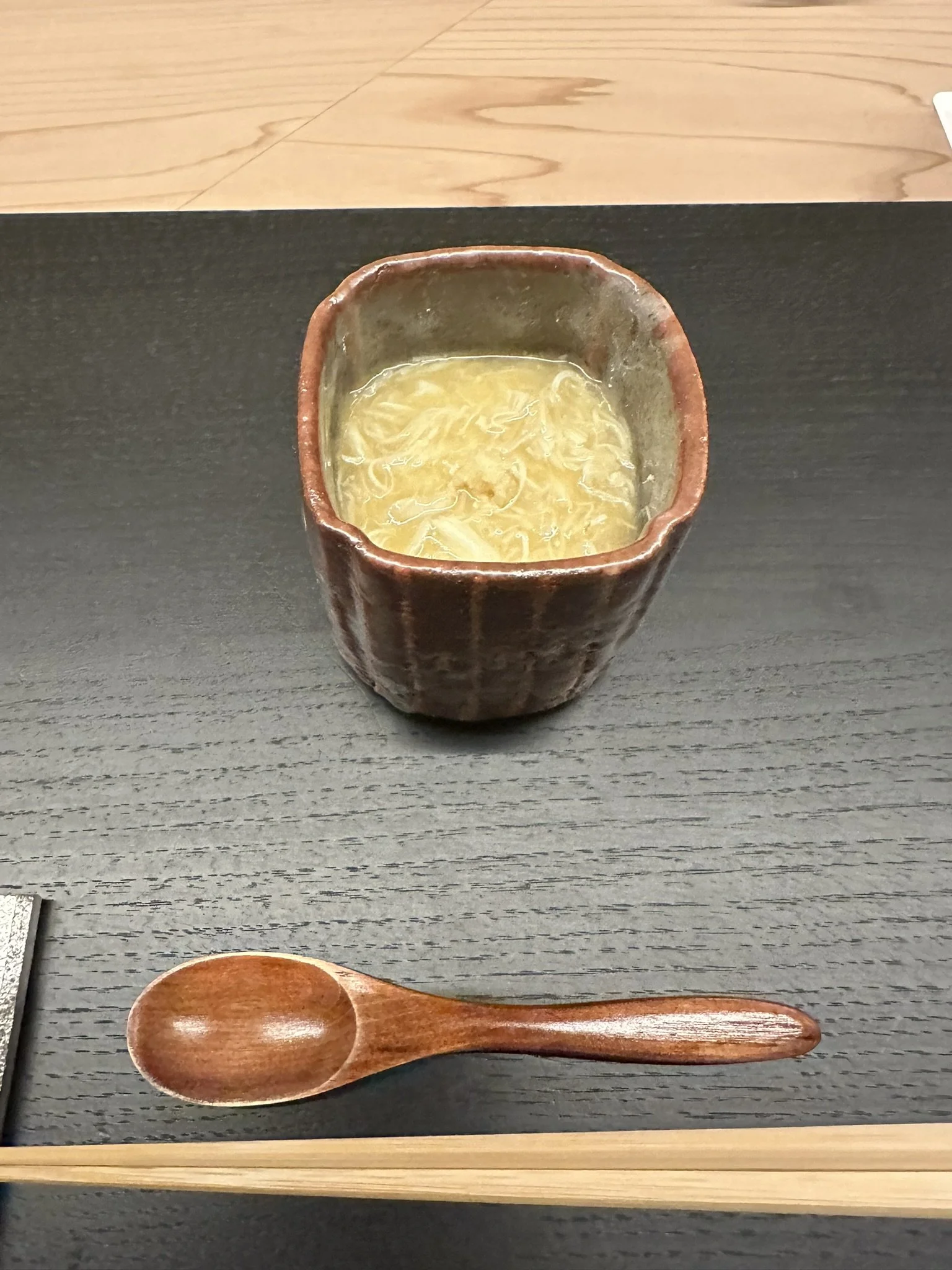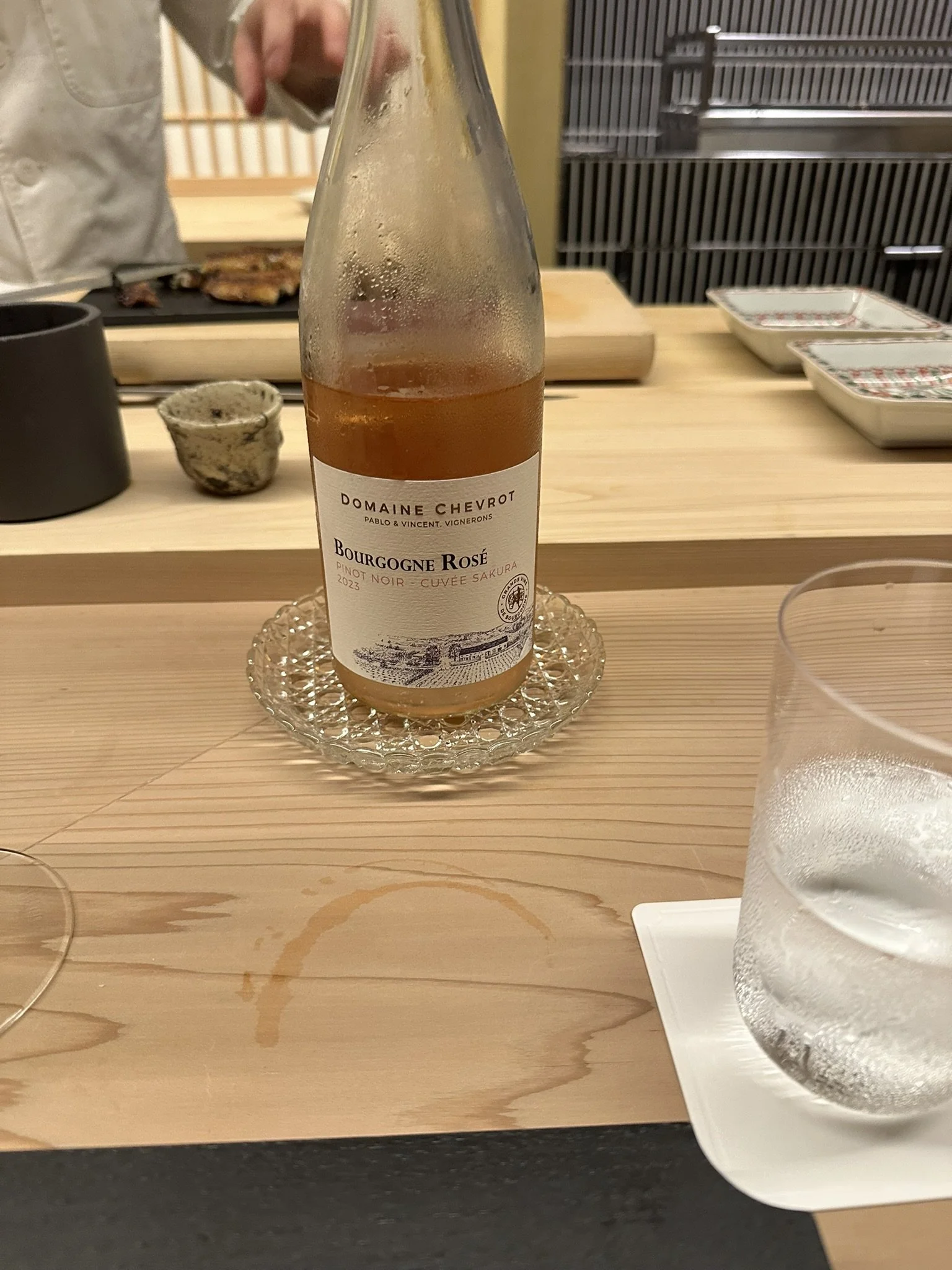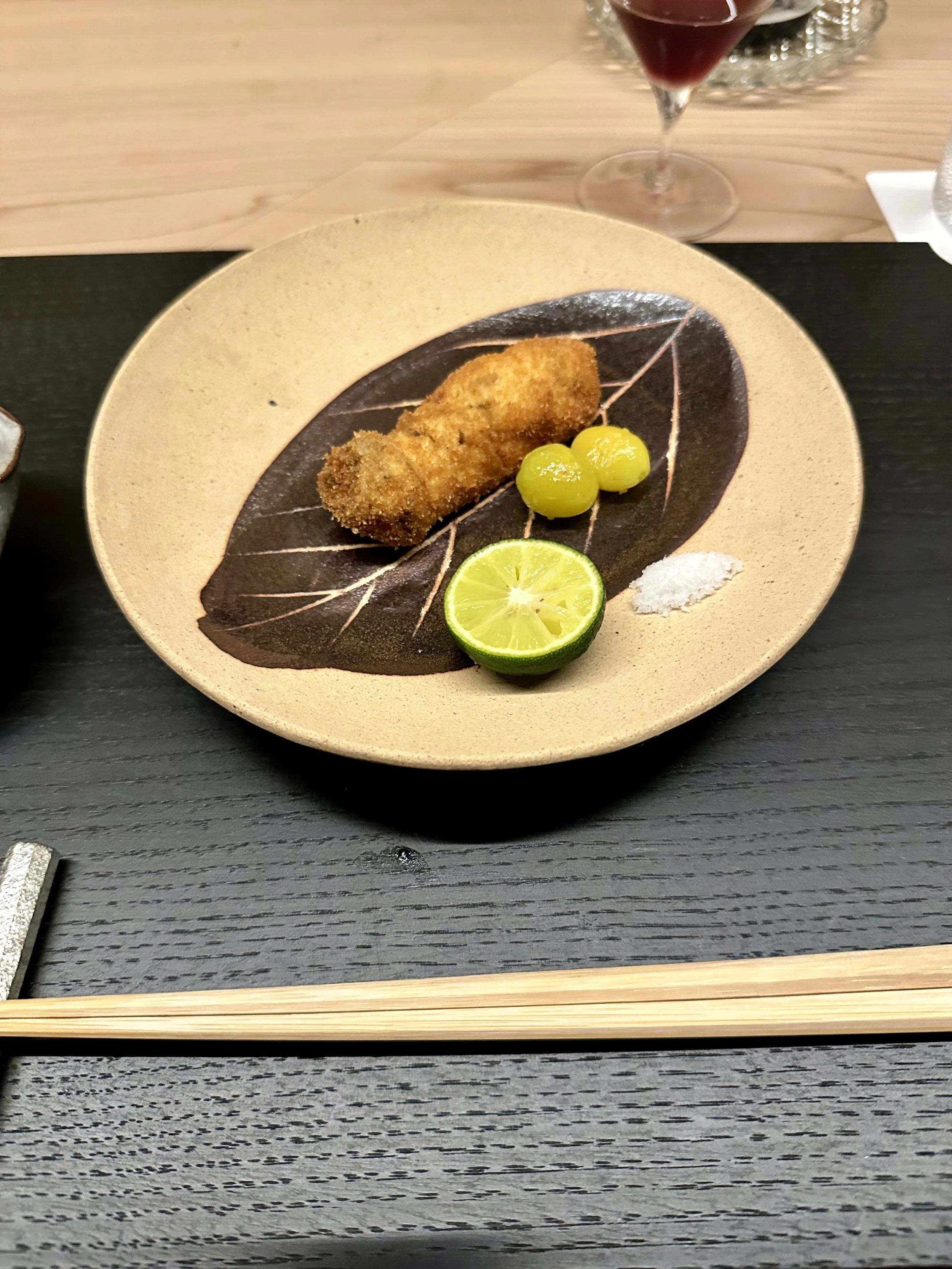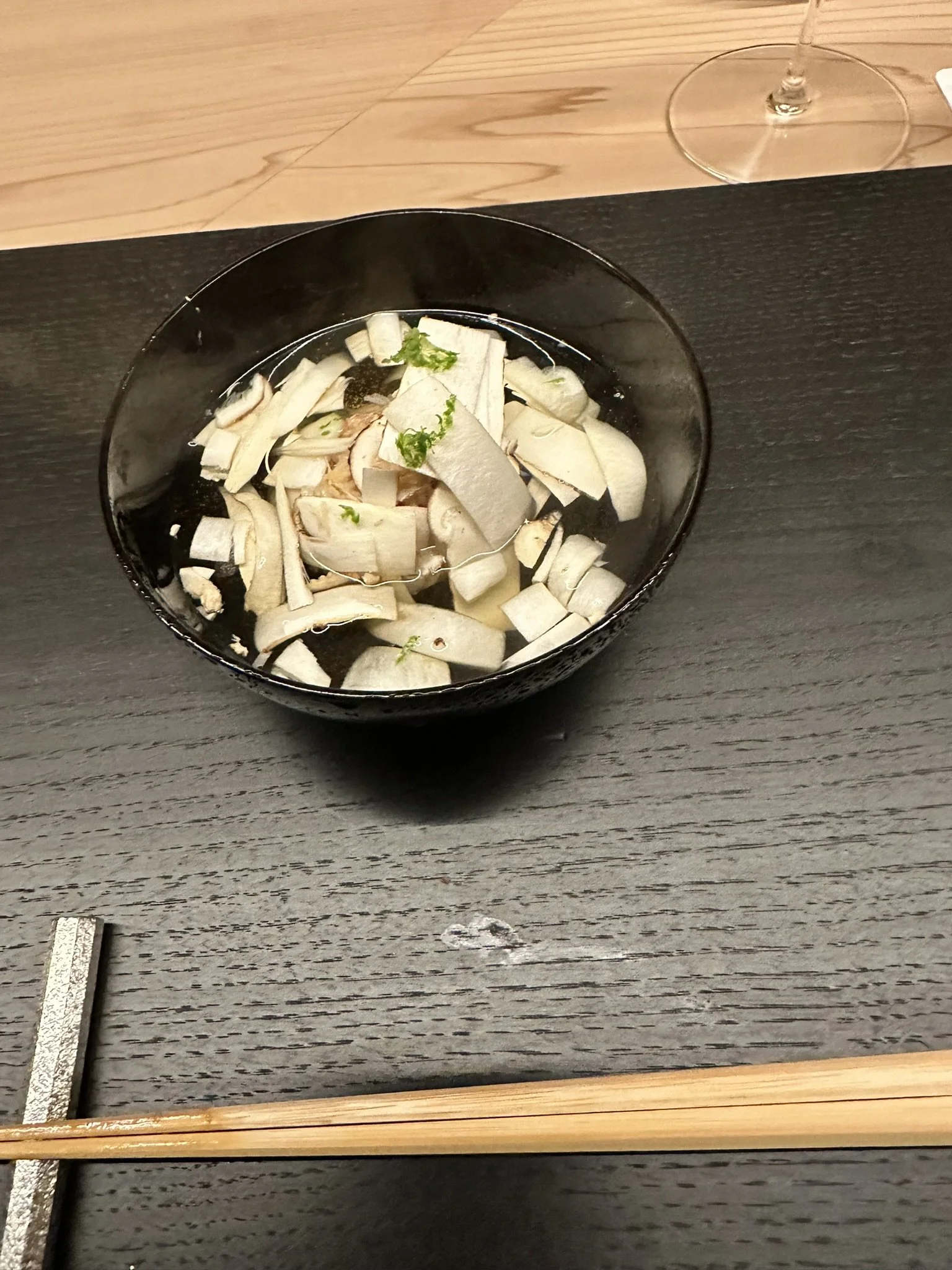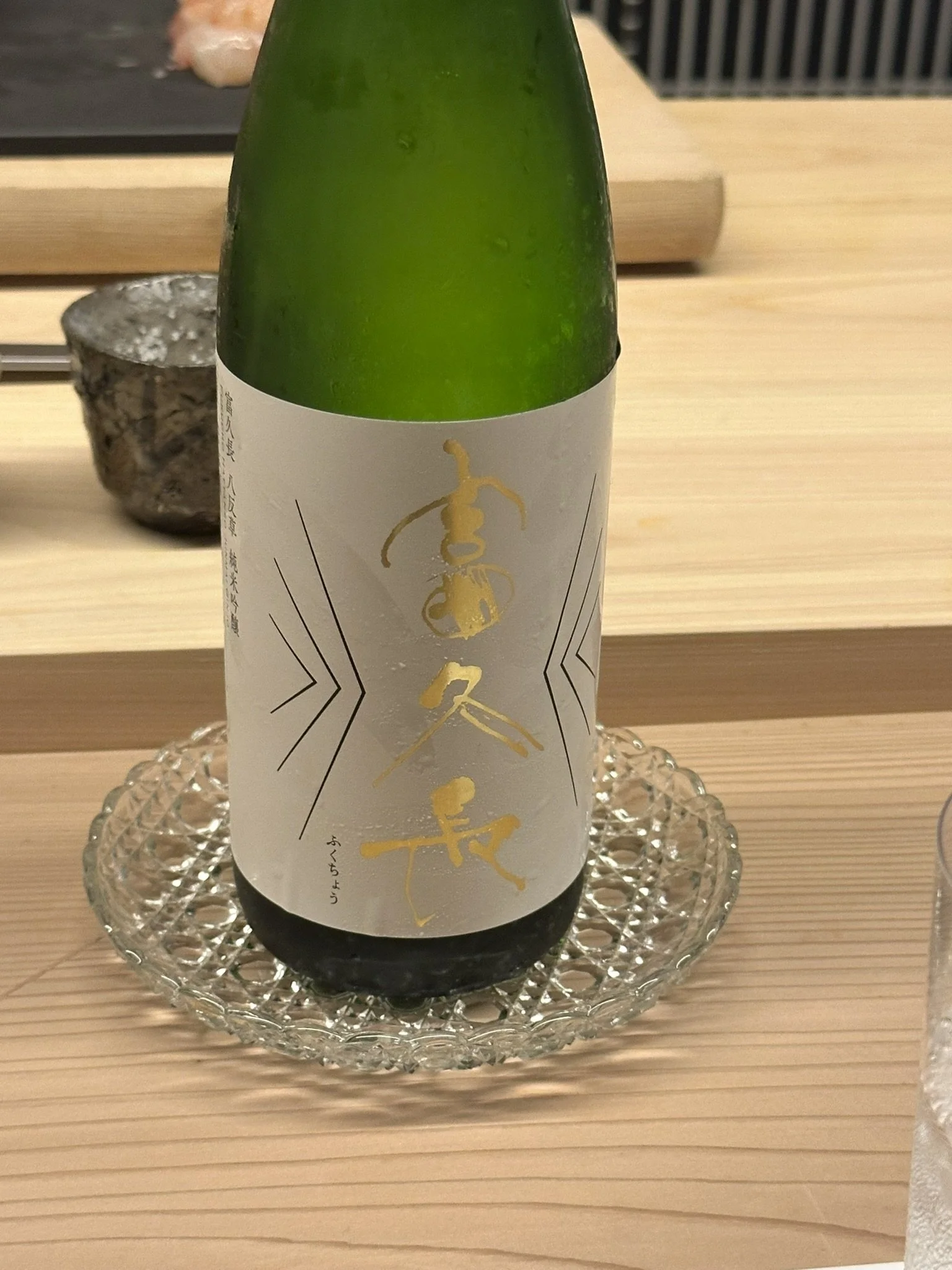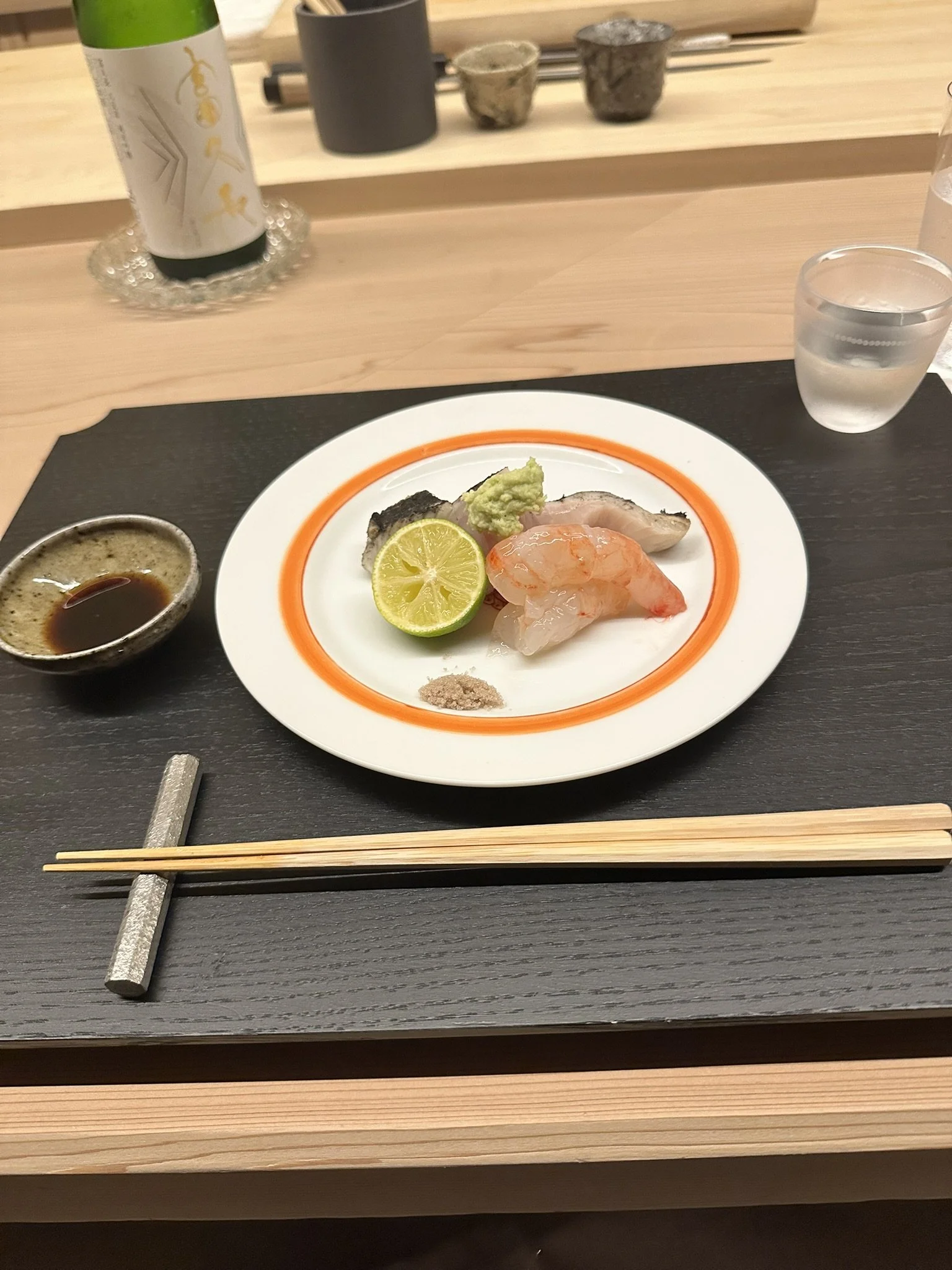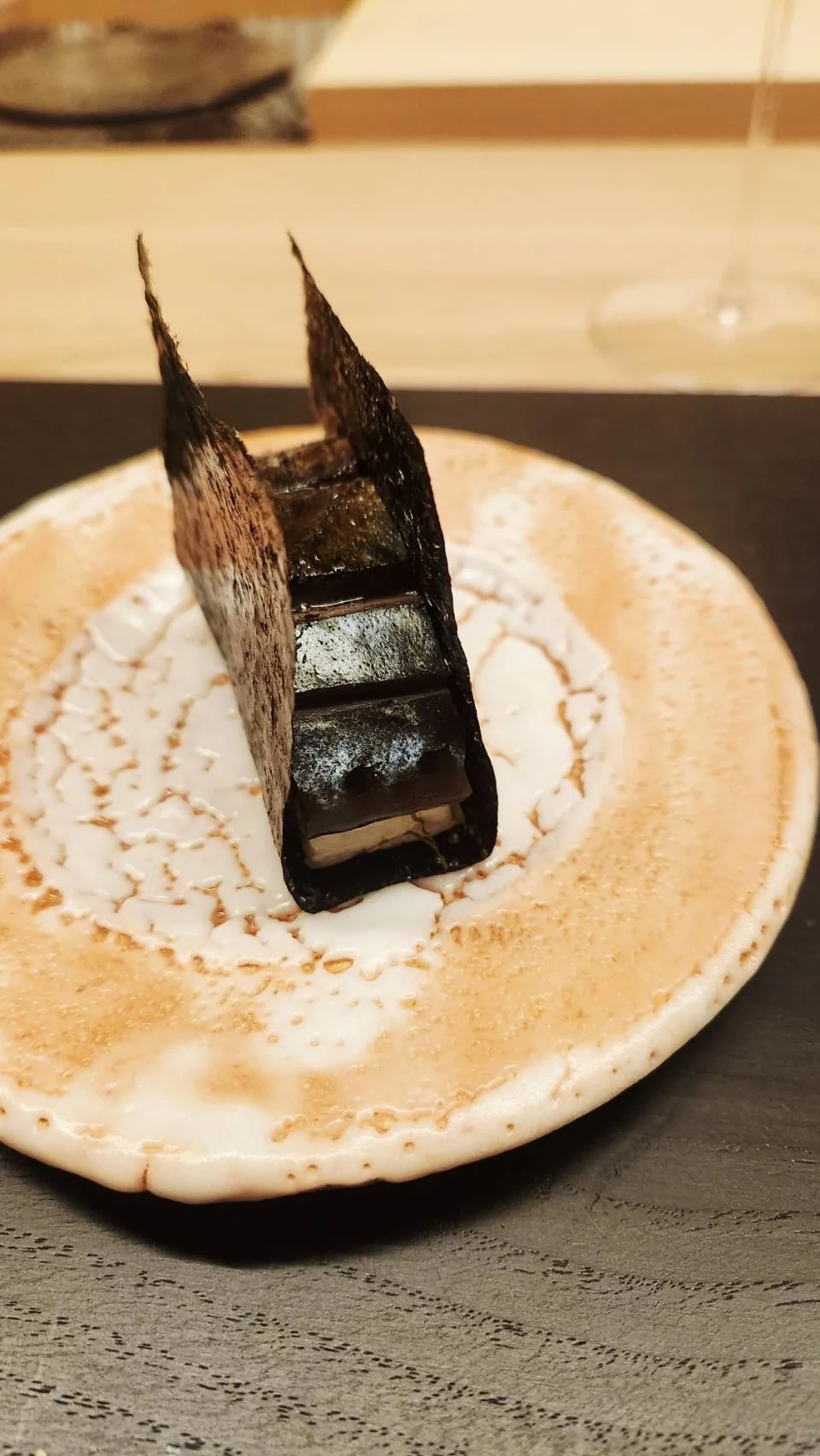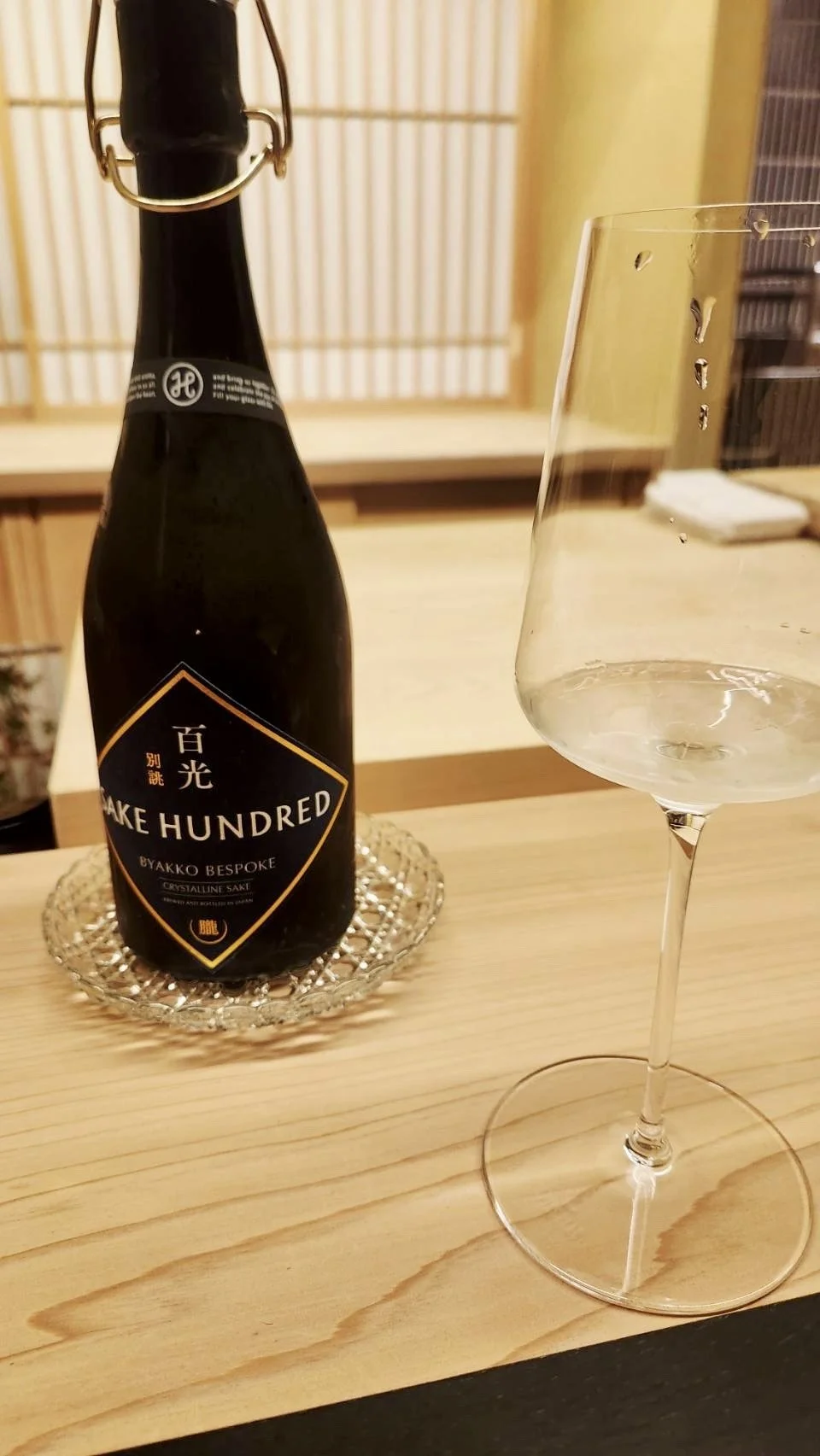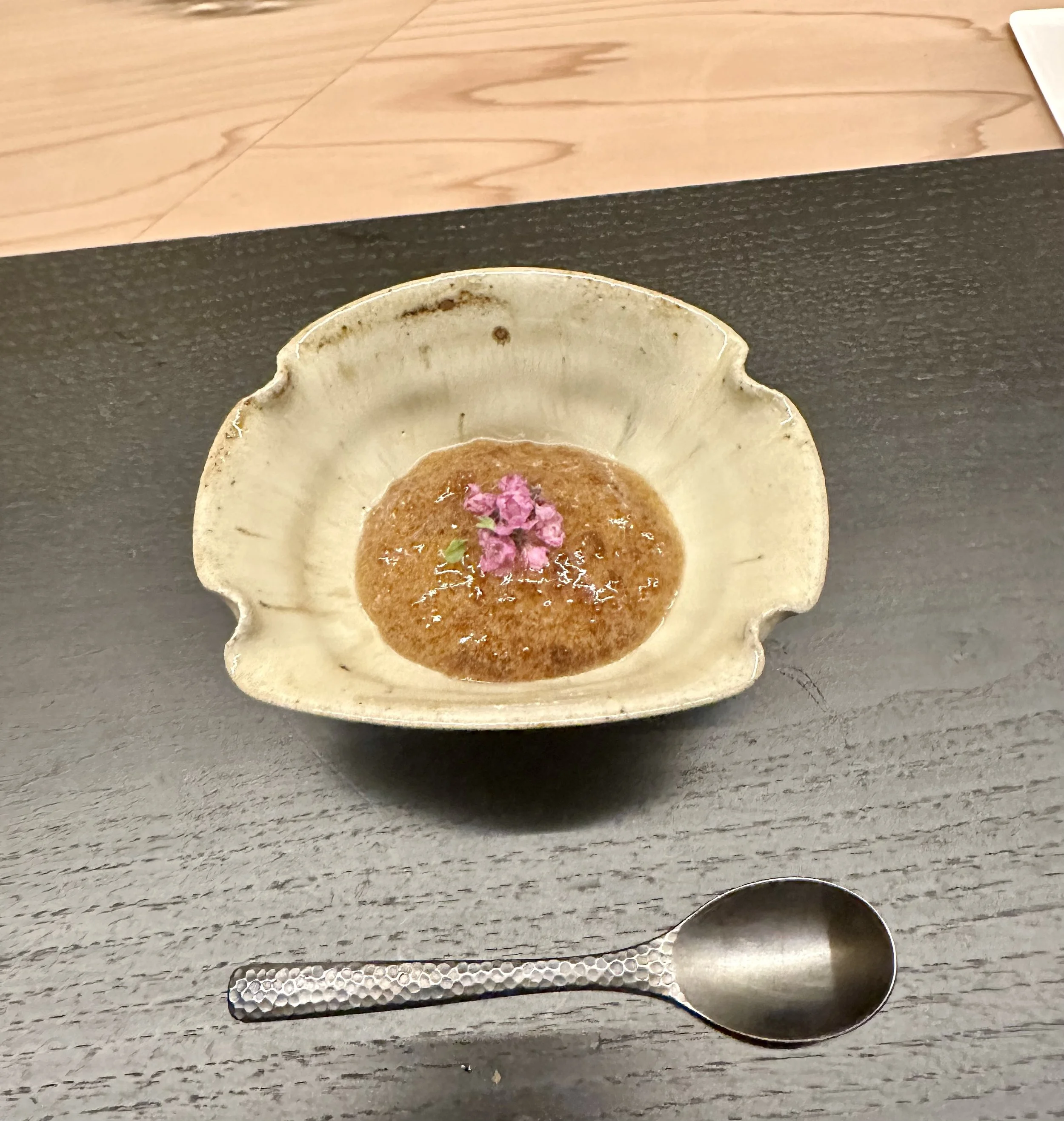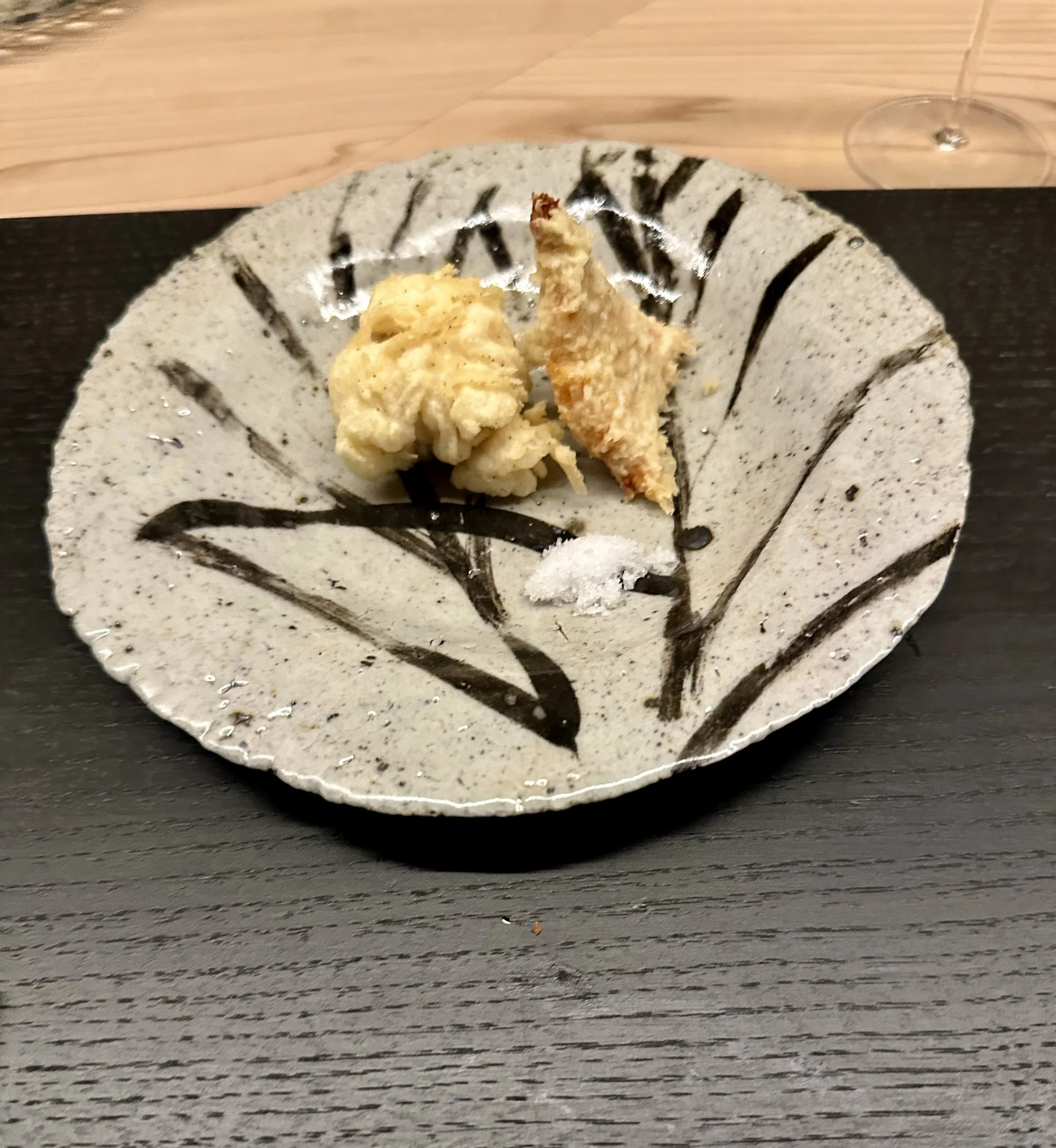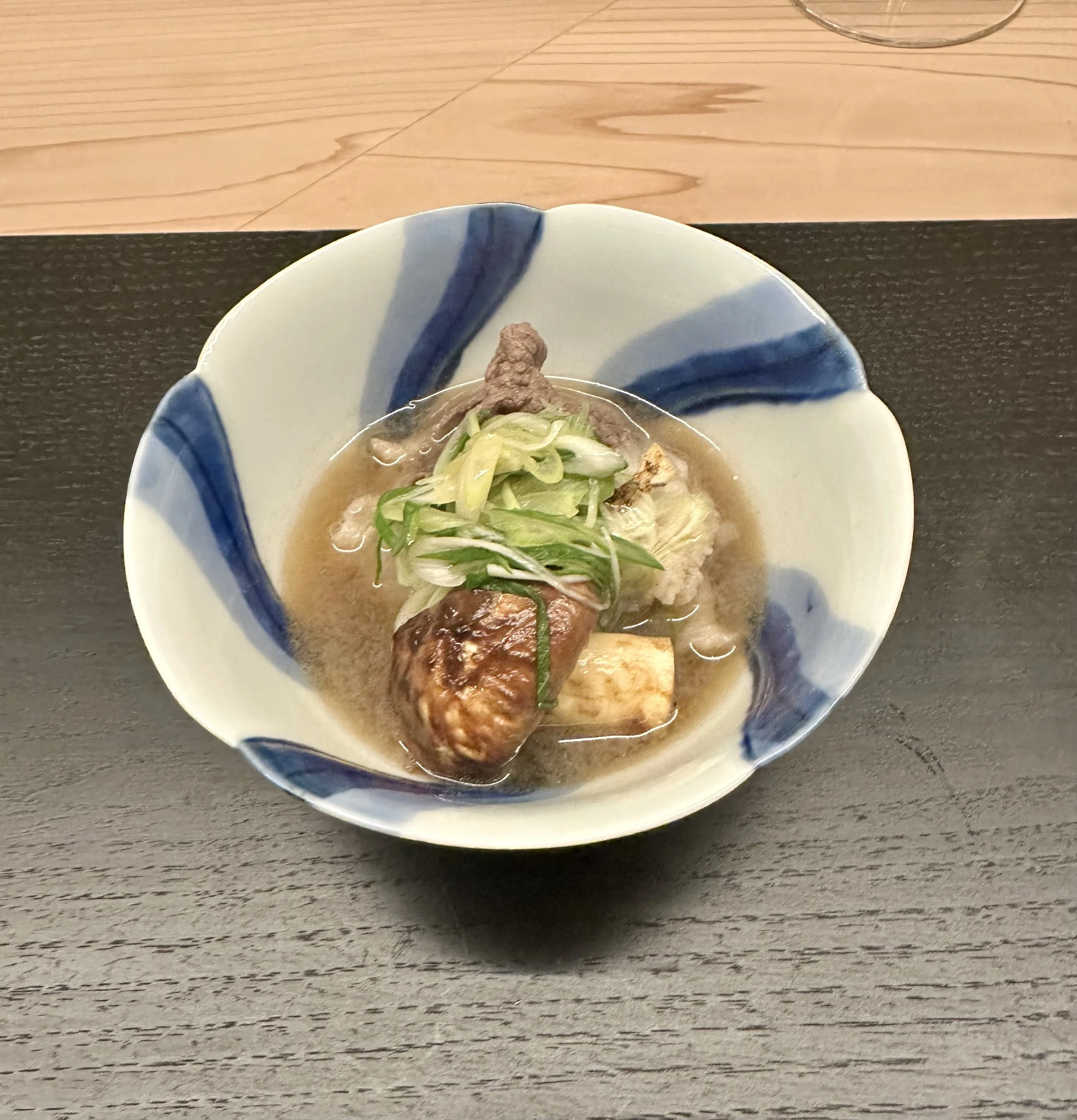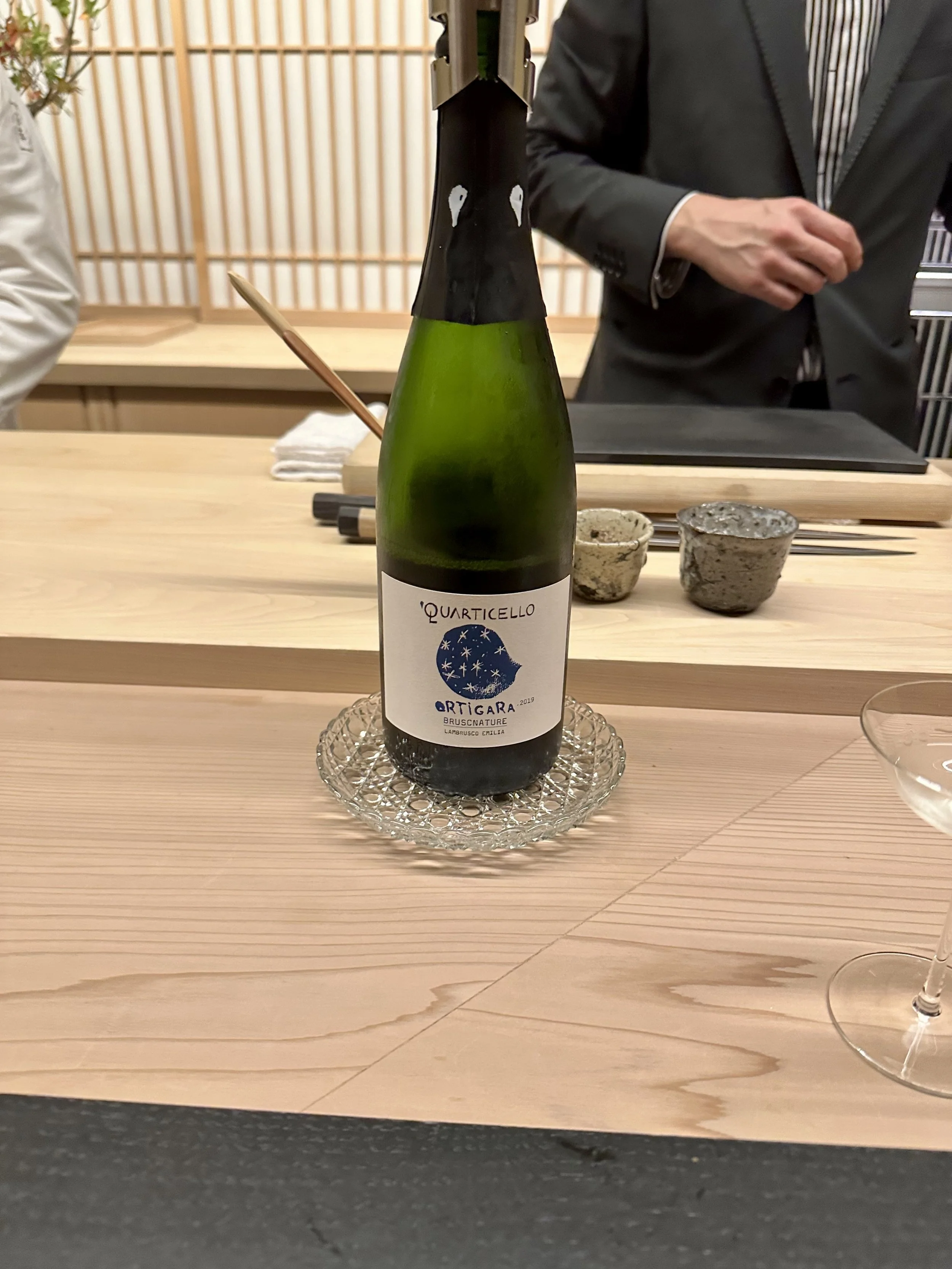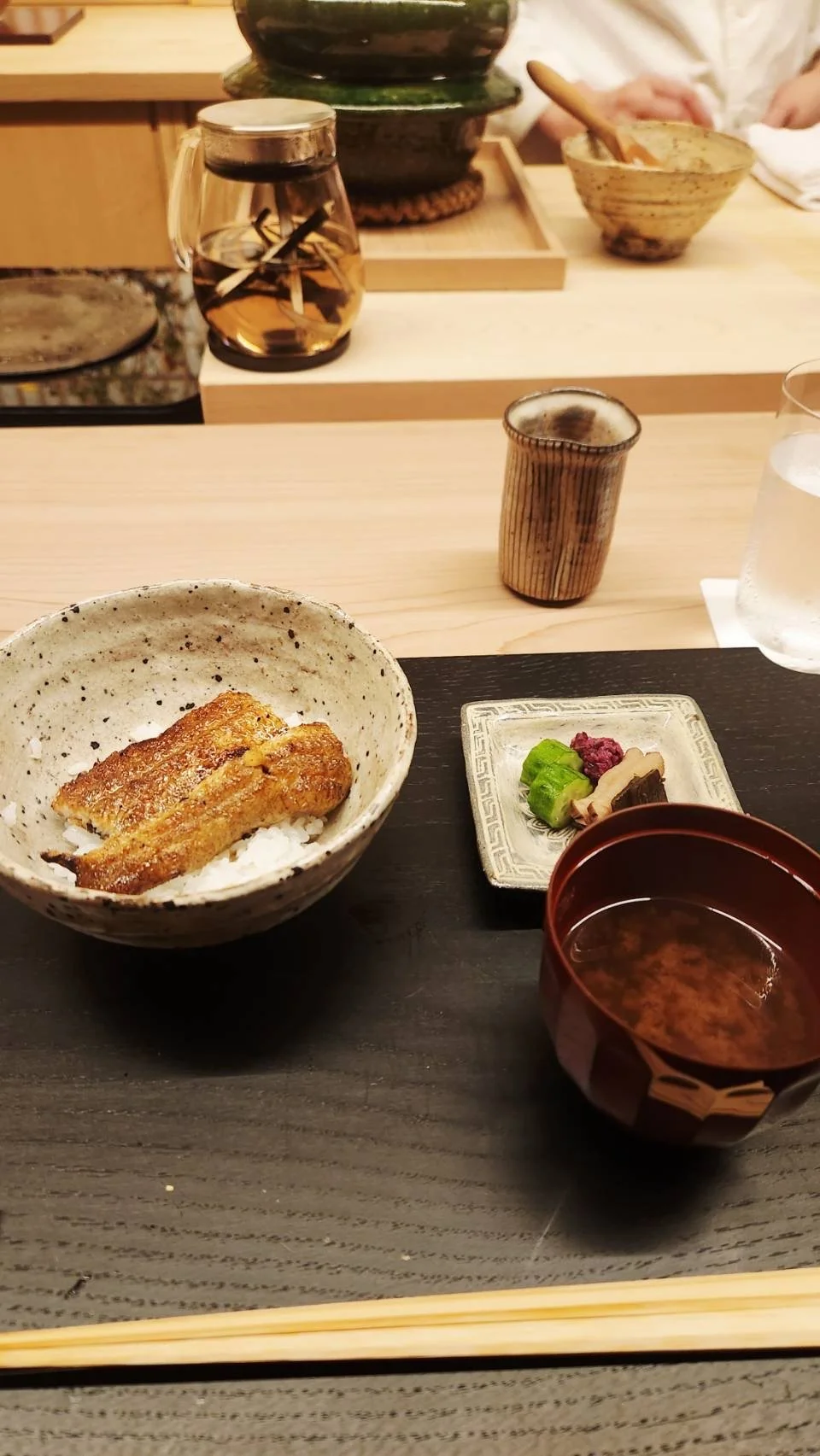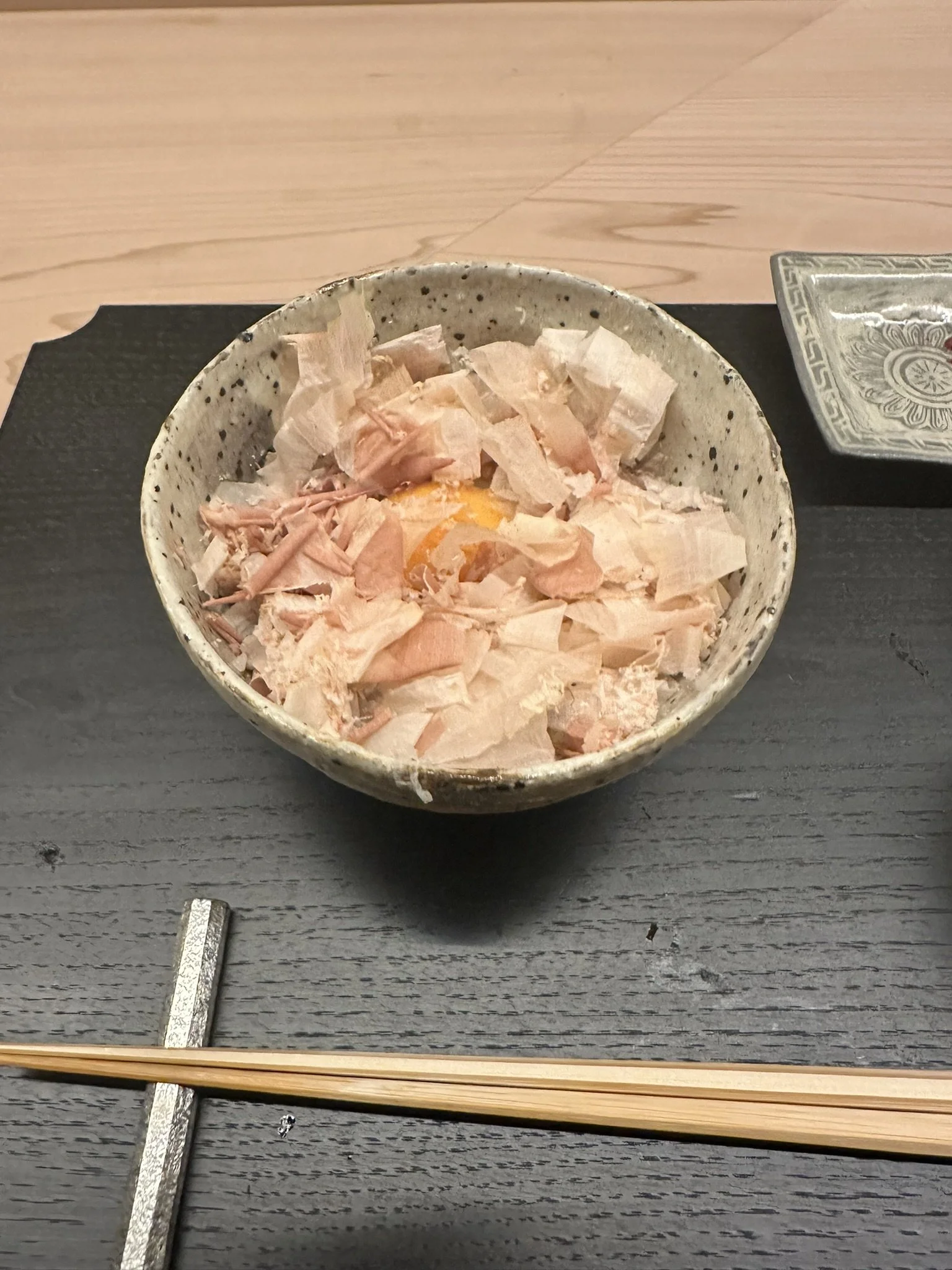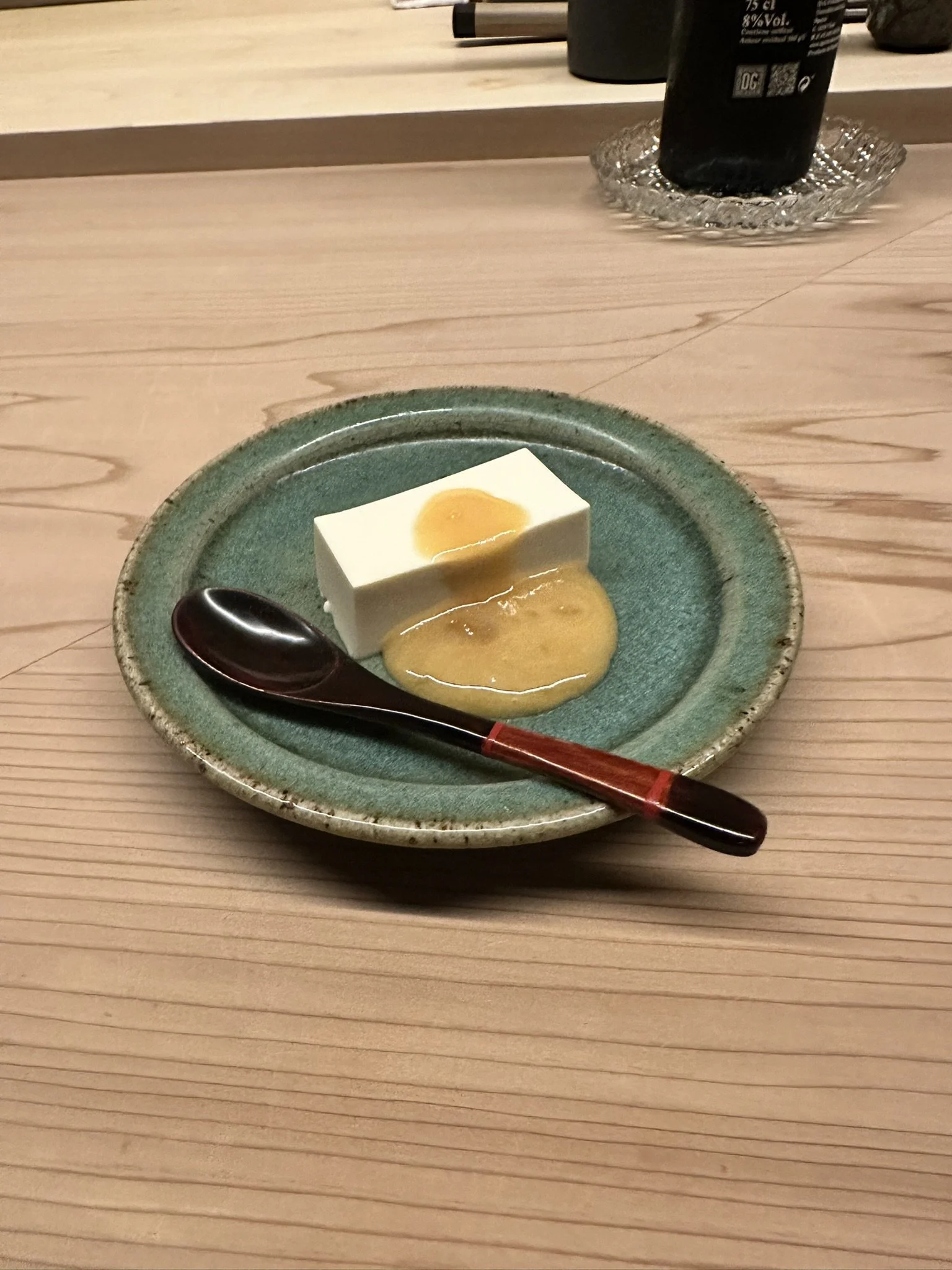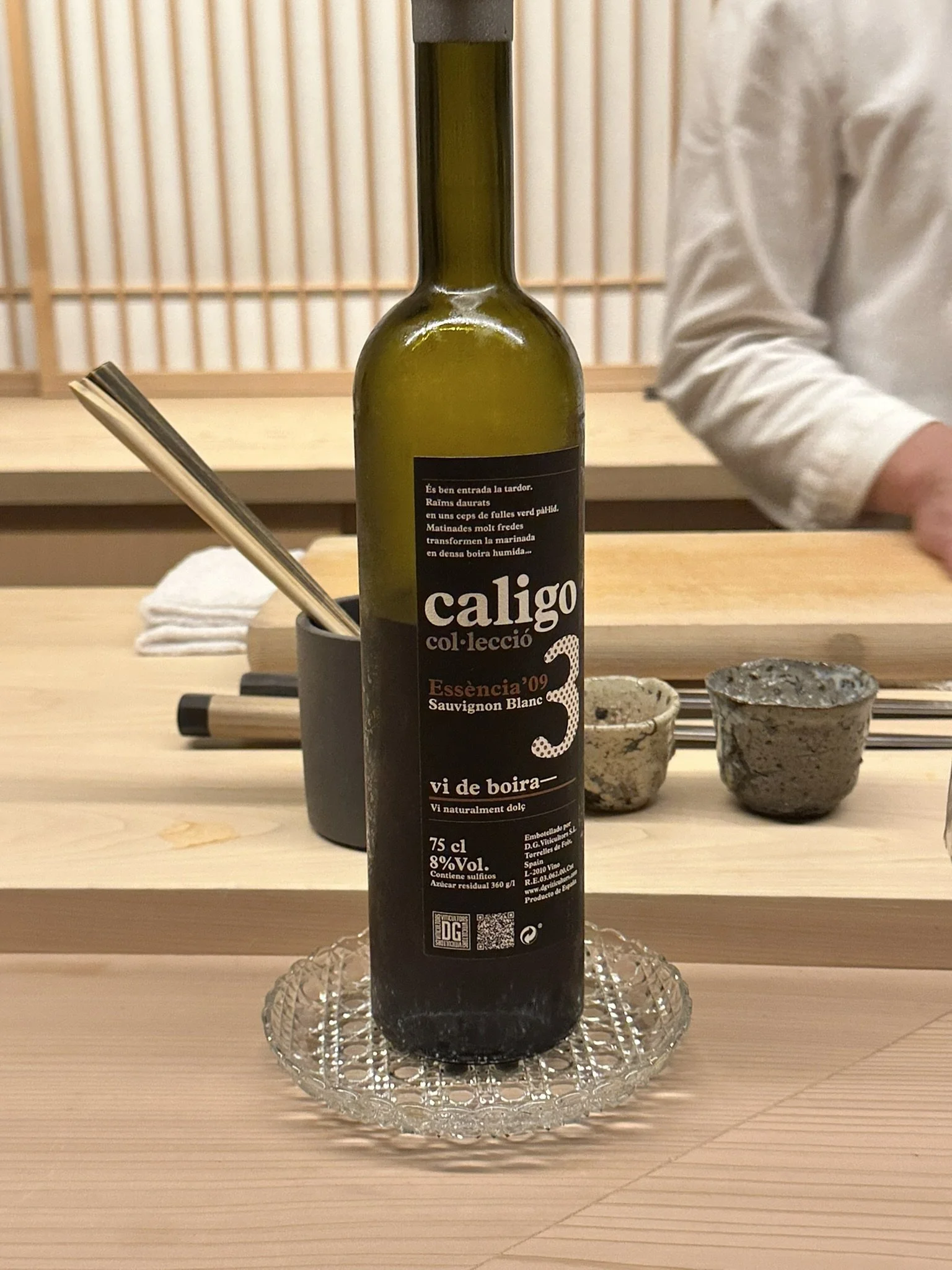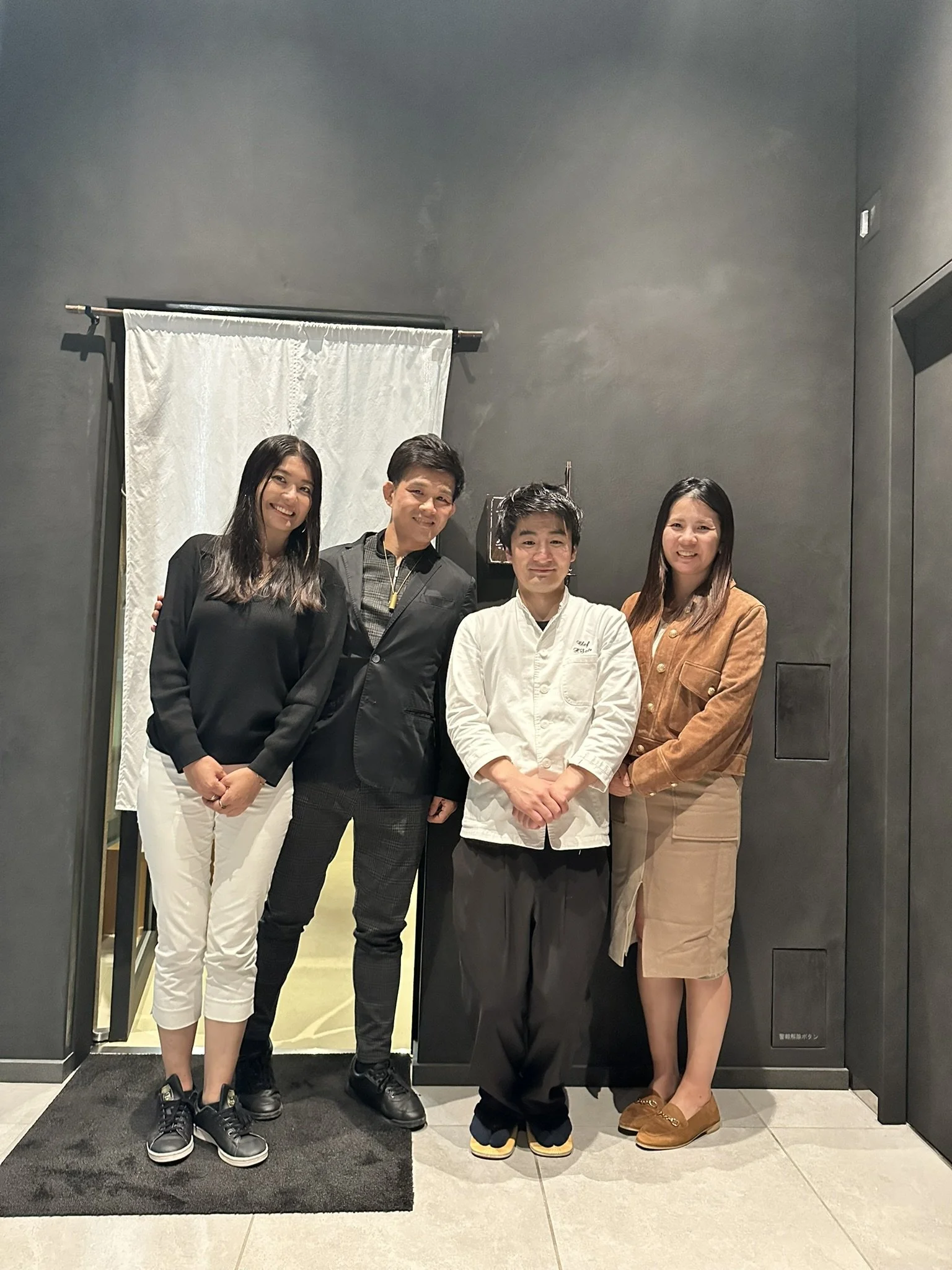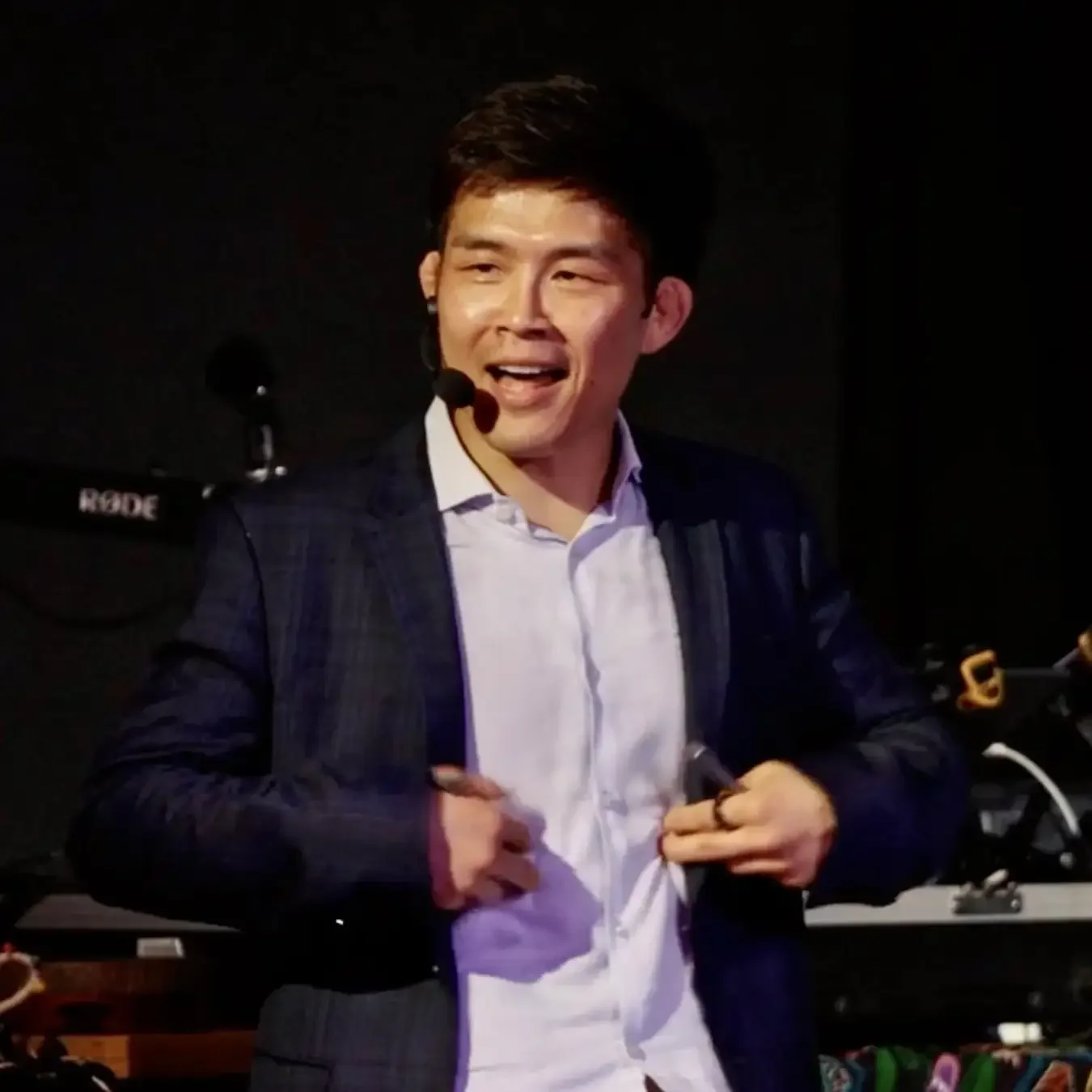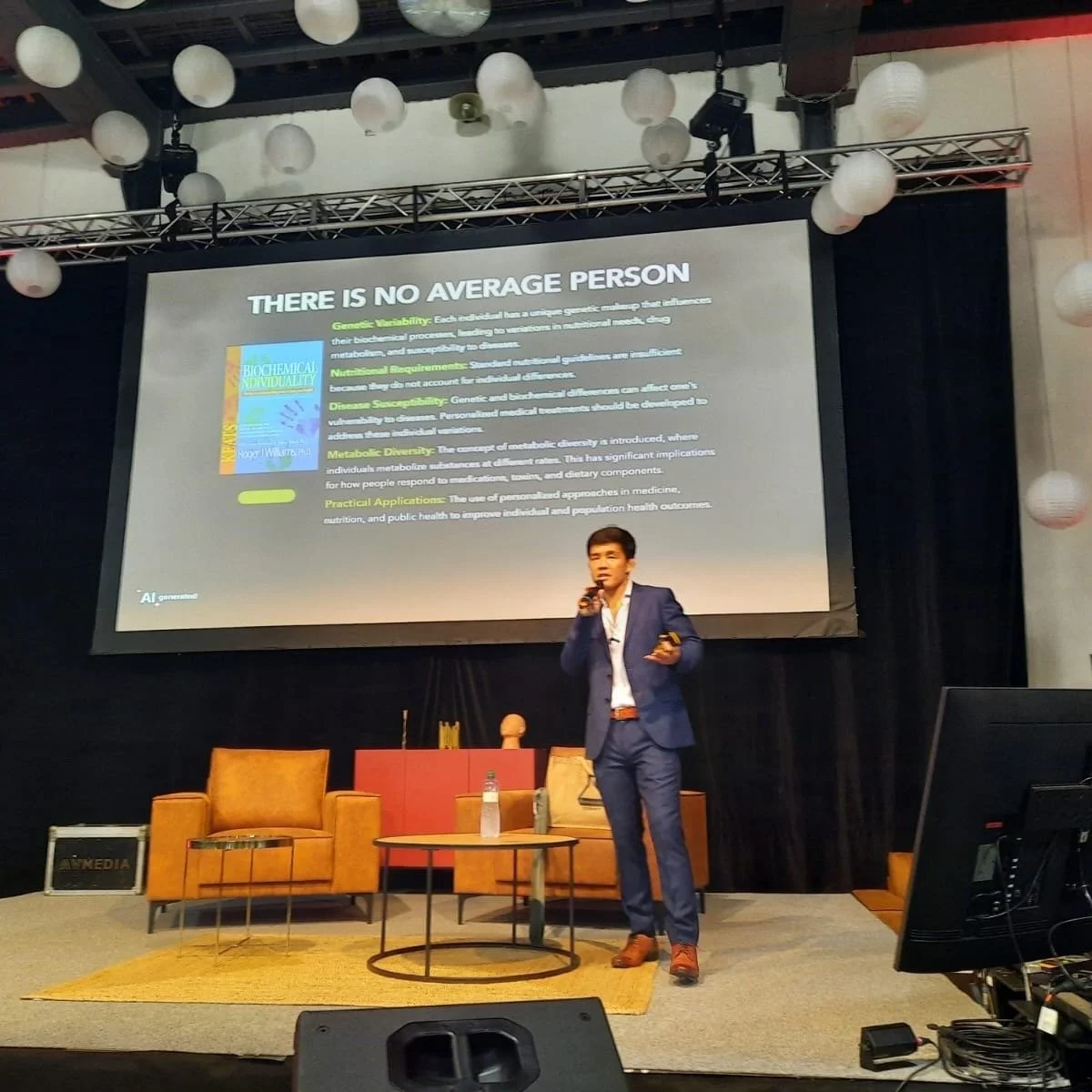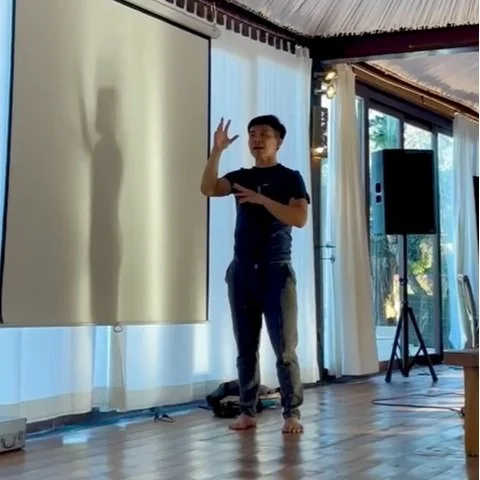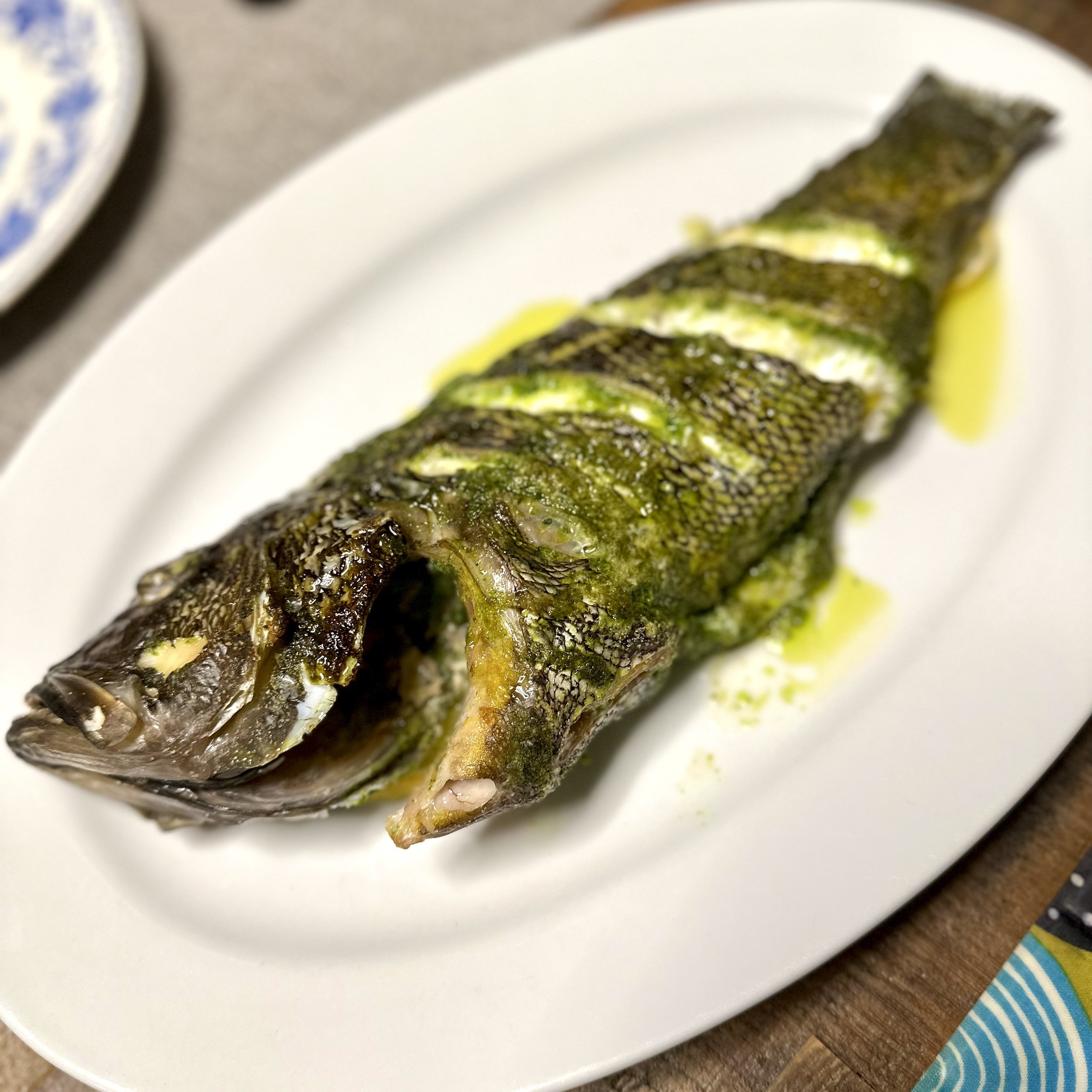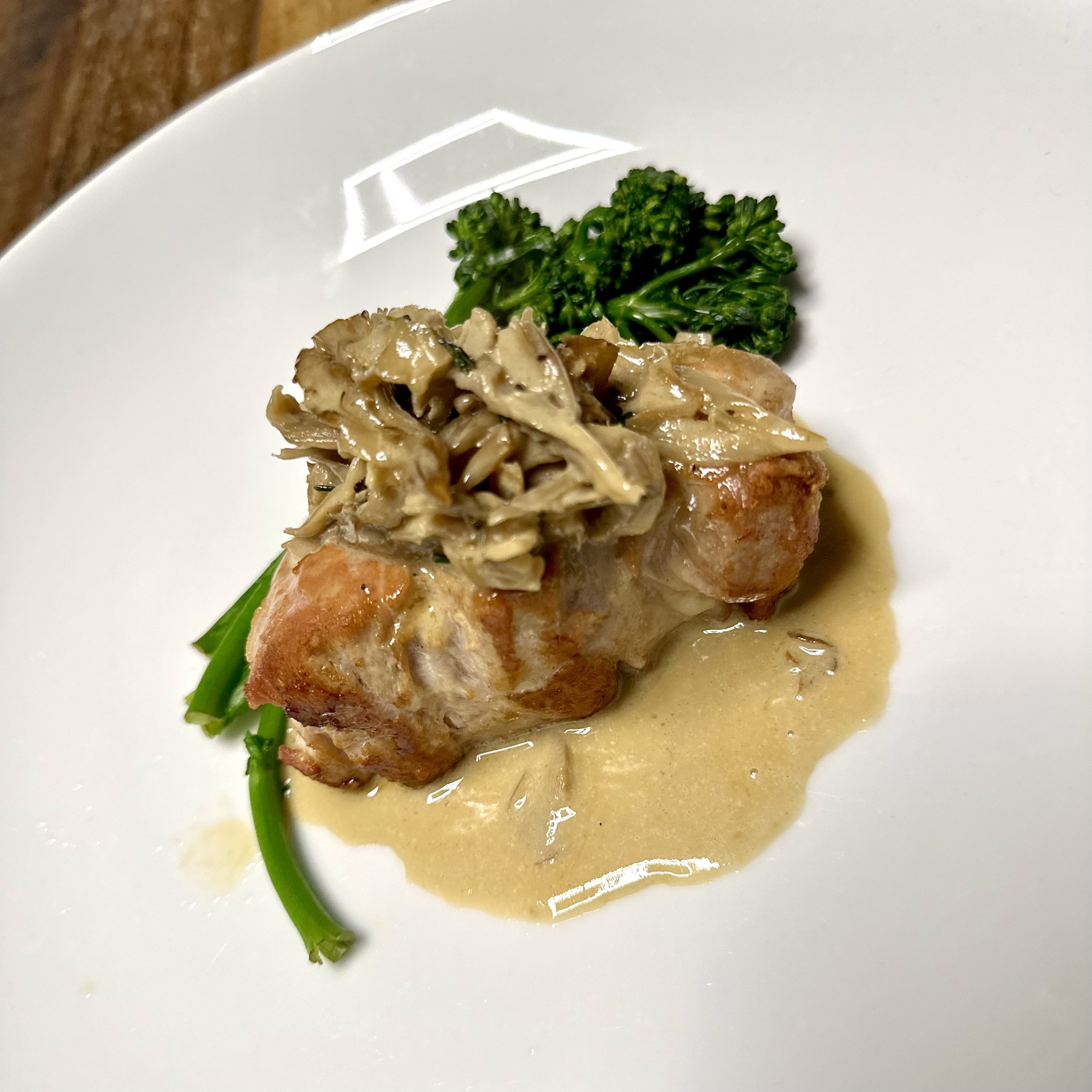百薬: Where 1000-Year-Old Fermentation Meets Gratitude - My Post-Summit Celebration
Hyakuyaku by Tokuyama Sushi
An ancient yet innovative culinary method
The Last Matsutake of the Season - Sharing Success With the People Who Made It Possible
HOLOLIFE Summit Tokyo 2025 was done. Years of planning. Hundreds of emails. Late night calls with sponsors. production issues. Venue changes. Speaker schedules. We pulled it off.
Any reward for myself? You know I am foodie, so I made it with Ayumi and Nanami. My podcast sidekicks. The people who've been with me since Day 1 of HOLOLIFE Japan.
I told myself after the summit: if this works, I'm taking them somewhere special. Not a team dinner at an izakaya. Somewhere REAL.
Hyakuyaku. By徳山鮓 (Tokuyama Sushi). Inside THE HUNDRED Longevity House.
This place isn't just a restaurant. It's a statement. Ancient Japanese fermentation techniques perfected by Tokuyama Hiroaki - a legend who took 1,000-year-old preservation methods and turned them into art. Under his supervision, Chef Hitoshi Sato creates what they call "medicine through food." Hyakuyaku - 百薬 - literally means "hundred remedies."
Perfect for a biohacker, right?
But that's not why I chose this place. I chose it because after everything we went through to make the summit happen, we deserved to experience something profound together and I have done the hundred Longevity house tour so many times for last 2 weeks, so I have to experience this place before going back to Boston.
The Team Behind Everything
Let me tell you about Ayumi and Nanami.
Ayumi is such a lovely support producer. She regularly travels to Rausu, Hokkaido, where she is involved in a regional revitalization project. Also, she always supports me when I am in Japan because I am not used to. I am a little kid at Tokyo station without a smartphone (well, I think most of us would be…) , but Ayumi saved me and told me where to go and how to buy a bullet train ticket.
Nanami runs ENWA Tokyo, that kimono remake shop in Asakusa I wrote about. But she's also been our cultural bridge, helping explain Japanese concepts to international guests, connecting us with the right people in Tokyo. She understands both worlds - traditional Japan and modern innovation.
These two women believed in the HOLOLIFE Japan vision before anyone else did. Before we had sponsors. Before we had a venue. When it was just me saying "I think we can bring this movement to Japan."
They said yes.
So when the summit ended successfully - sold out, amazing speakers, incredible energy - I knew exactly what I wanted to do.
Walking Into Hyakuyaku
The restaurant is inside THE HUNDRED, this longevity-focused members club in Ginza. The moment you walk in, you feel it. Different energy. Quiet. Intentional. Not stuffy, just... present.
We were greeted by the sommelier and Chef Sato himself. He's from Fukushima, grew up fishing and foraging for mountain vegetables. Trained at top restaurants in Tokyo, then studied fermentation under Tokuyama-san. You can tell immediately - this isn't someone following trends. This is someone who understands food at a molecular level AND a cultural level.
"Welcome," he said. "We're doing omakase tonight with full pairings. And..." he smiled, "today is the last day of matsutake season."
The three of us looked at each other. WHAT.
"This summer was too hot. The temperature dropped late. These might be the last quality matsutake we see this year."
We got lucky. No - we got BLESSED.
Oshinogi - Matsutake and Chestnut Rice
First course came. A small bowl, lid on top.
Chef explained: "Sticky rice, matsutake mushroom on top, grated Japanese chestnut covering everything."
We lifted the lids simultaneously.
That SMELL. Oh my god, buddha, or Kami.
Ayumi closed her eyes. "This is autumn. This is Japan."
She was right. The aroma - sweet chestnut first, then that unmistakable matsutake fragrance. That piney, earthy, impossible-to-describe smell that costs hundreds of dollars per kilogram.
I took a bite. The chestnut flavor came first, creamy and sweet. Then the matsutake hit - that香り (kaori/aroma) going straight up through your nose. The umami. The forest. Everything.
"So luxurious," Nanami said, almost whispering. "The aroma is incredible."
"Autumn flavor royalty," I added. Because that's what this was. The king and queen of Japanese autumn ingredients together in one bowl.
The sommelier poured our first pairing - an orange wine from Piedmont, Italy. Cortese grape, skin contact, that orange color from extraction.
"Piedmont is famous for truffles and mushrooms," he explained. "This region also eats a lot of rice and organ meats. There's a connection to what's in your bowl."
I love when pairings aren't just about taste - they're about PLACE. About understanding that wine and food come from the same earth.
Matsutake Fry - The Whole Thing
Second course: a whole matsutake. Deep fried.
Chef brought it out personally. "I left it whole specifically for Tateki-san," he said with a slight smile.
Ayumi and Nanami laughed. They know I appreciate when chefs don't hold back on portion size.
"Try it first with just salt and sudachi citrus," Chef suggested. "Then use the soy-based sauce if you want."
I picked it up. Bit into it.
"Whoa. The texture!" I said. The outside was crispy, but inside - the matsutake had this SPRING to it. Bouncy. And the umami was LOCKED IN. Concentrated.
"Frying actually intensifies it," I explained to the girls. "All that flavor sealed inside."
"This is the best," Ayumi declared. "Way better than grilled."
The Australian Gamay red wine paired with this - light body, fresh fruit, but with mushroom-y, mycelium-type notes. Perfect for the fried texture and the dashi-based sauce.
The Parade Continues
お椀 (Owan) - Hairy crab and matsutake pressed together like a shinjo. Yuzu fragrance on top.
I took one bite and said: "Umami bomb. But elegant."
That's the only way to describe it. It was this EXPLOSION of flavor - crab, mushroom, that dashi base - but somehow refined. Not overwhelming. Just... perfect.
Ayumi and Nanami both made that face. You know the face. When food is so good you can't talk, you just make sounds.
The sake pairing - Hattanso from Hiroshima - was chosen specifically to NOT overpower. Let the delicate flavors shine.
お造り (Sashimi) - Spanish mackerel (sawara) straw-grilled and botan shrimp.
"Itoshima, Fukuoka," Chef explained. "First catch of the season. 18% fat content."
EIGHTEEN PERCENT. For context, that's insanely high for fish.
The piece was THICK. Like, unreasonably thick. I picked it up.
No omega 3 supplementation is needed for tonight.
One bite. "Wahhh." That's all I could say.
The fat content made it almost melt. But the straw grilling gave it that smoky edge. Spring fish? No. Chef corrected me - sawara is actually best in fall and winter.
Every course teaching me something new about Japanese ingredients.
The Wild Ones
Then things got interesting.
焼物 (Yakimono) - Mackerel heshiko with nori.
Heshiko is fermented mackerel. Salty, funky, intense. The presentation was BEAUTIFUL.
The sake pairing - "Byakko" special version - had this blue cheese-like aroma. With fermented fish? PERFECT.
肴 (Sakana) - This is where Chef Sato showed his徳山鮓 training.
On the plate:
Deer consommé jelly
Bachiko (sea cucumber ovary) - fried, and Shirako (cod milt) - fried
The funazushi - if you don't know, this is one of the oldest forms of sushi. Before Tokyo-style nigiri, this was THE sushi. Fermented for months or years. Super funky. Not for everyone.
But with the deer jelly? With the honey? With the fried bachiko adding that texture?
Mind. Blown.
The wine pairing was Vin Jaune from Jura, France. Made like sherry but more delicate. I forgot to take a picture!! The sommelier explained that Jura used to be underwater, so the soil has intense minimality. Perfect for funazushi and bachiko - both from water, both intense flavors.
"We could wait years for this," I joked about the wine.
But seriously, the complexity was incredible.
Moon Bear Hot Pot
Then came the moment.
鍋物 - Moon bear (月の輪熊 / Tsuki no wa guma) and matsutake hot pot.
Yes. Bear.
Chef explained: "The fat is the best part. High melting point. Collagen-like texture. Slippery but not heavy like beef."
First bite. The meat was JUICY. Like, incredibly juicy. No gamey taste at all. The fat... Chef was right. It had this slippery, almost gelatinous quality, but clean. Not greasy.
"This is delicious!" both of them said, surprised.
We talked about how bears eat - nuts, berries, fish. What they eat affects how they taste. This bear probably ate really well.
The pairing was Lambrusco - dry sparkling red wine from Emilia-Romagna. In Japan, most Lambrusco is sweet. This was DRY. Totally different.
"I would never order this normally," I admitted. "That's what omakase is about,"
The Final Stretch
天然鰻 (Natural eel) - Wild eel from Mikatagoko in Fukui. Skin grilled until crispy.
That CRUNCH on the skin, then the tender meat inside.
卵かけご飯 (Tamago kake gohan) - But not just any TKG. He offered us after Unagi. “Do you want our TKG?“ chef said, and I immediately said “why not“
The rice pot was from Kumoigama - I have one at home! These pots are LEGENDARY. I mentioned it to Chef and his eyes lit up. But the katsuo-bushi (bonito flakes) - this is where it got special.
Chef explained: "From Ibusuki, Kagoshima. Shaved fresh. You have to eat it within 30 minutes or it oxidizes. Becomes acidic. Gets crispy. But right now? It should melt."
I took a bite with rice and egg and bonito.
The aroma hit my nose first - that incredible かつお (katsuo) smell. Then the taste came in waves. First the bonito, then the egg, then the rice. They weren't mixed - they were LAYERED. Each flavor arriving separately but in perfect sequence.
"The first taste and the last are separated," I said to Chef. "This is calculated."
He smiled. He knew I got it.
The Sweet Ending
Black letter tea (黒文字茶) to cleanse the palate.
Then dessert: Annin tofu (almond jelly) with Japanese honey bee honey from Ibaraki.
Chef explained the difference: "Western honey bees vs Japanese honey bees. Different species. This is raw - not heat treated. The enzymes are alive. The acidity, the complexity... totally different from supermarket honey."
The honey was slightly crystallized on purpose - for texture.
I took a bite. "So complex." Then I said something: "How have I been eating the wrong honey my whole life?"
The dessert wine - Spanish Sauternes-style botrytis - paired with that honey perfectly.
But I was also thinking: "This would go with single malt whisky too."
The layers. The depth. This wasn't just sweet. This was an experience.
What This Night Really Meant
After the last course, after the tea, we sat there. The three of us. Just... present.
Thank YOU. Both of you. This summit doesn't happen without you.
And I meant it.
Look, I could have celebrated alone. I could have taken this meal by myself as a personal reward. I earned it, right? Months of stress, making this summit work.
But sitting there with Ayumi and Nanami - the people who believed when it was just an idea, who worked late nights, who never complained, who BELIEVED in the mission - that's when the success felt real.
The matsutake being the last of the season? That wasn't luck. That was the universe saying: you're exactly where you need to be, with exactly who you need to be with.
Every dish that night was about preservation. Fermentation. Taking something from nature and transforming it through time and care into something even more valuable.
Chef Sato taking ingredients from the mountains and lakes where he grew up, studying under Tokuyama-san to understand fermentation at the deepest level, then serving it to people who can appreciate not just the taste, but the MEANING - that's百薬 (hyakuyaku). That's medicine through food.
But the real medicine that night? Gratitude. Sharing success with the people who made it possible.
What Hyakuyaku Taught Me
This restaurant is inside a longevity club. THE HUNDRED. The whole concept is about living better, living longer.
And yeah, the food there IS medicine. The fermentation, the quality ingredients, the careful preparation - all of it supports health at a cellular level.
But here's what I learned: longevity isn't just about the food you eat. It's about WHO you eat it with. It's about gratitude. It's about recognizing the people who support you and honoring that.
Japanese culture has always understood this. The kaiseki tradition isn't just about the food - it's about the gathering. The seasonality connects you to nature. The progression of courses creates rhythm. The omakase experience requires trust between chef and diner.
If you ever make it to THE HUNDRED in Ginza, go to Hyakuyaku. Experience Chef Sato's work. Taste what 1,000 years of Japanese fermentation knowledge can become.
What's your most memorable meal? And who was sitting across from you? Tell me your story.
NEWS
- October 2025
- September 2025
- August 2025
- June 2025
- May 2025
- April 2025
- September 2024
- August 2024
- July 2024
- June 2024
- May 2024
- April 2024
- March 2024
- February 2024
- November 2023
- October 2023
- September 2023
- August 2023
- April 2023
- March 2023
- December 2022
- October 2022
- August 2022
- July 2022
- June 2022
- May 2022
- April 2022
- March 2022
- February 2022
- January 2022
- December 2021
- November 2021
- May 2021
- March 2021
- January 2021
- July 2020
- April 2020
- January 2020
- November 2019
- September 2019
- August 2019
- July 2019
- June 2019
- March 2019
- January 2019
- December 2018
- October 2018
- September 2018
- July 2018
- May 2018
- April 2018
- September 2017
- March 2017
- January 2017
- December 2016
- November 2016
- September 2016
- July 2016
- February 2016
- January 2016
- December 2015
- October 2015
- September 2015
- January 2015
- November 2014
- September 2014
- August 2014
Optimized Life
- June 2025
- July 2024
- April 2024
- October 2023
- September 2023
- May 2023
- April 2023
- March 2023
- January 2023
- December 2022
- November 2022
- October 2022
- August 2022
- June 2022
- November 2019
- August 2019
- July 2019
- June 2019
- May 2019
- March 2019
- December 2018
- August 2018
- June 2018
- December 2017
- November 2017
- October 2017
- September 2017
- September 2016
- August 2016
- February 2016
- May 2015
- April 2015
- February 2015
- August 2014
- June 2014
Tatekitchen
- November 2025
- February 2025
- January 2025
- December 2024
- November 2024
- October 2024
- September 2024
- August 2024
- July 2024
- June 2024
- May 2024
- April 2024
- February 2024
- January 2024
- December 2023
- November 2023
- September 2023
- July 2023
- June 2023
- May 2023
- February 2023
- January 2023
- December 2022
- November 2022
- August 2022
- January 2022
- December 2021
- November 2021
- September 2021
- July 2021
- June 2021
- May 2021
- April 2021
- March 2021
- February 2021
- January 2021
- December 2020
- November 2020
- September 2020
- August 2020
- June 2020
- May 2020
- February 2020
- December 2019
- November 2019
- August 2019
- May 2019
- March 2019
- February 2019
- January 2019
- November 2018
- October 2018
- June 2018
- May 2018
- January 2018
- December 2017
- November 2017
- September 2017
- July 2017
- May 2017
- April 2017
- January 2017
- December 2016
- October 2016
- September 2016
- July 2016
- May 2016
- April 2016
- March 2016
- February 2016
- January 2016
- November 2015
- May 2015
- April 2015
- March 2015
- October 2014
- September 2014
- August 2014
- June 2014
- May 2014
- February 2014
- June 2013
- April 2013
- March 2013
- November 2012
- September 2012
- July 2012
- June 2012
- May 2012
- March 2012
NEWS
OPTIMIZED LIFE
TATEKITCHEN
BLOG

